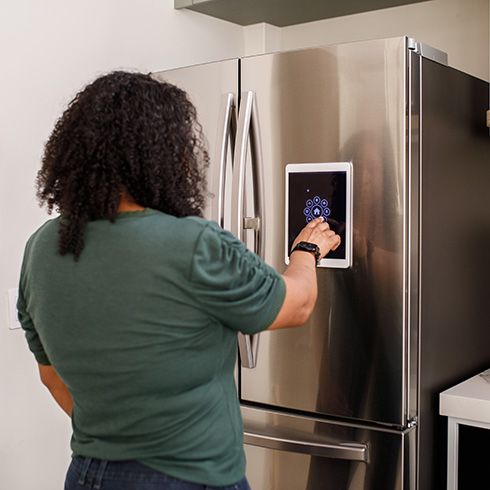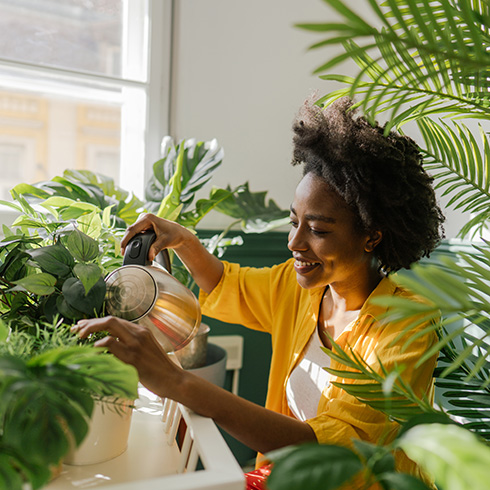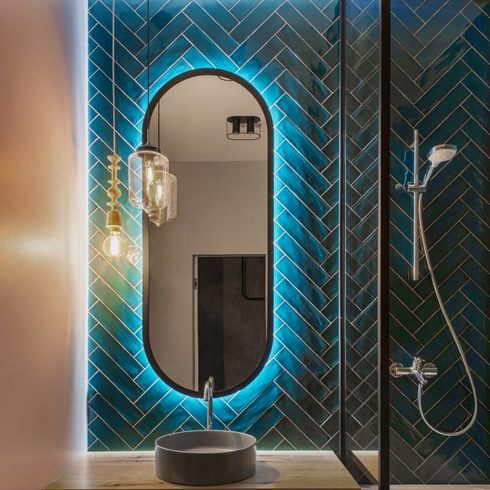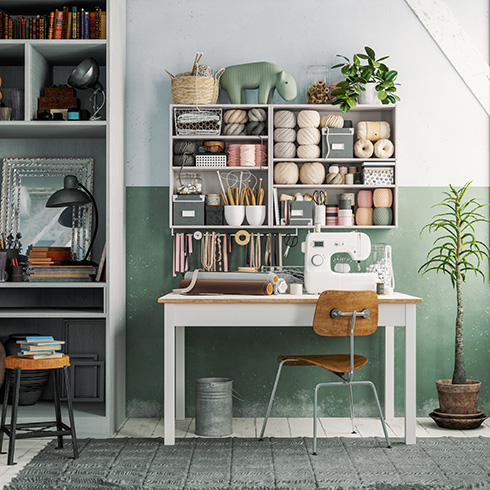When the pandemic forced us all into lockdown, it made most of us look at our homes in new ways. One building needed to function as a living space, office, classroom, playground, or entertainment complex. But now that it’s safe again to go out, will we still expect our homes to be more than just a place to eat and sleep? Trend forecasters at WGSN used their expertise to predict our homes in the next three years. Here are some of the future home trends you’ll see everywhere in 2025, according to their Home Lifestyles 2025 white paper.

Energy-Efficient Homes
As we are increasingly experiencing the effects of climate change, we are becoming more mindful of its impact on the environment. This isn’t the only reason people will focus more on energy efficiency in their homes, though: The rising cost of living and disruptions to the supply of oil, natural gas and other energy sources will prompt more of us to find ways to save on our energy bills.

A Focus on Comfort
Having had to actually spend time in our stylish homes, we’ve discovered what a difference it makes to our lives when things are comfortable too. We’ll keep this focus going with furniture we can curl up on, colours and fragrances that soothe, and textiles in different textures that make everything feel cozy. Retro will remain in style, especially amid financial uncertainty, so we’ll browse all those vintage and antique shops for unique, affordable finds.

More Proactive Smart Tech
In the past few years, our own experts like Mike Holmes have been touting the benefits of owning a smart home. In the coming years, smart tech won’t just give us what we need; it’ll start telling us what we didn’t know we needed. For example, in the works are fridges that make it easier for us to see what groceries we need without actually having to open the fridge, which can help us make better shopping choices and waste less food.

Homes Made For Hybrid Working
With so many people not wanting to go back to the office, smart companies have realized that to retain their best workers, they need to offer hybrid working arrangements at the very least. This is inspiring companies to develop better products for people working from home. For example, we can already buy headphones that block out noise without cancelling it completely, so we can stay focused but can also hear when the kids have set the kitchen on fire.

Multifunctionality
Because we now use our homes for so much more, we’re looking for more multifunctionality in our spaces. A living room needs to double as a workspace; a dining room needs to easily convert into a classroom; a bedroom needs to become a gym. So, we’ll see more products designed to serve more than one purpose, such as tables with foldouts that can turn them into desks. There will also be a move away from open plans to spaces that can serve multiple functions.

Outdoor Living Spaces
It’s no coincidence that single-family homes with backyards saw a surge in popularity during and since the pandemic: being able to go outside into the garden has been a way not to lose our minds. We’ll continue to turn our outdoor spaces into our own private slices of paradise with features such as outdoor showers and entertainment areas, freestanding home offices and sheds, outdoor lighting and waterproof speakers. We’re also looking to use these outdoor spaces throughout the year: fire pits, outdoor kitchens, balconies and decks that we can cover, and so on.

Clean Living
With the focus on what’s good for the environment, we’re also looking more into what’s good for us and getting rid of everything that isn’t. We’re essentially Marie Kondo-ing our homes to get rid of everything that doesn’t spark joy. So, we’re swapping all those chemical-laden cleaning products for natural and even homemade ones. We’re even looking at products that will give us cleaner air, like the air-purifying paints being developed right now. Until those paints are widely available, a good alternative is plants that will improve the air quality in your home.

Low-waste Homes
Speaking of reducing food waste, being more environmentally conscious and having to stretch our budgets more means that we are increasingly looking for ways to reduce, reuse and recycle. Growing trends include eco-friendly packaging – if there’s any packaging at all – and refillable products, ways to make composting easier and products that can help us mend what we already have rather than buying new things.

Discreet Design
As we’re filling our homes with more and more tech, we’re looking for ways to not make every room look like a space command centre. We’ll see more tech that discreetly fits in with the décor, using natural materials, subtle colours, soft textures and minimalist forms. We’ll also see more embedded and invisible tech.

A Focus on Self-care
More of us want our homes to be havens where we can relax and rejuvenate. Self-care is becoming increasingly important for our mental and physical wellbeing and for most of us, that starts in the bathroom. So, we’re moving towards the kind of bathroom that allows us to turn it into a mini-spa, complete with extraordinary bathtubs to soak in, spacious showers, underwater speakers and luxurious bath products.

Plants
There’s a big trend towards bringing nature into the home by adding plants. It’s not just for greenery either: We’re becoming more conscious of houseplants that reduce stress, help us sleep better and purify the air. As we’re focusing on fresh ingredients, more of us are growing our own herbs and veggies too. This means that in the coming years, we’re likely to see more growing kits, apps to help us keep our plants healthy, and even furniture with integrated planters.

Sensorial Design
Another trend that’s on the rise is design that aims specifically to appeal to the senses. It can be as simple as lighting scented candles or choosing the best paint colour for each room in your home to create the right ambience. More advanced sensorial design that we’ll soon see everywhere include ASMR-focused products that bathe us in coloured light or sounds.

Inclusivity
As we become more conscious of inclusivity, we’re looking for ways to make everyone feel welcome in our homes too. There will be a bigger focus on products that cater to people who are neurodiverse or living with disabilities. With Canada’s ageing population, we’ll also see more products designed in such a way that the elderly can use them as easily as their grandchildren. If you’re thinking of revamping your home, you’ll be happy to know that alterations that make it more accessible can earn you some great tax benefits, rebates and grants for renovating.

Gamification
Gaming systems were some of the hottest items during the pandemic and many of us who were only looking for a way to pass the time became dedicated converts. Turning our homes into a gamer’s paradise is a trend here to stay for the foreseeable future. We’re not only going to see more ergonomically designed equipment and immersive gaming spaces but we’ll also see the influence of games in interior design: colours, shapes and textures inspired by games like Animal Crossing, Stardew Valley or Spiritfarer, for instance.

At-Home Entertaining
With rising costs forcing us to rein in our spending, we’ll be more inclined to entertain at home. We don’t want to feel like it’s because we can’t afford going out, so we’ll be investing in things that will help us be the hostess with the mostest: statement dinnerware, a home bar, upgraded dining and entertainment spaces and the like.

Inspiring Creativity
During the pandemic, we learned to bake bread and knit as ways to pass the time. With financial uncertainty, crafts and DIY may be just the solution to not only save us money but also to earn us money in the coming years. In terms of home trends, this means craft rooms that are more purpose-focused and with better tools and equipment, but also a swing towards unique and fun designs in our decor.
Home Network your inbox.
By clicking "SIGN UP” you agree to receive emails from Home Network and accept Corus' Terms of Use and Corus' Privacy Policy.




